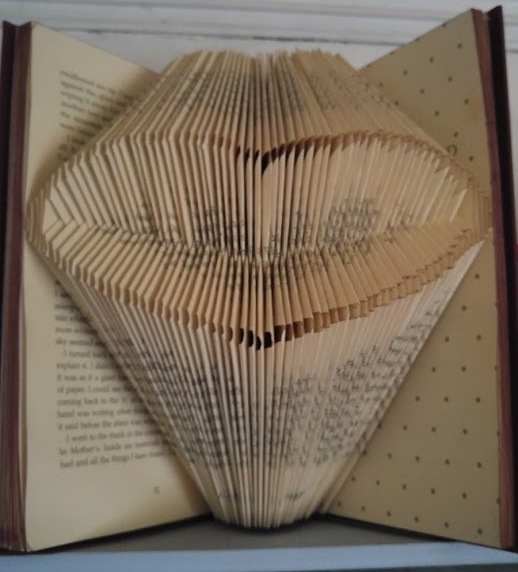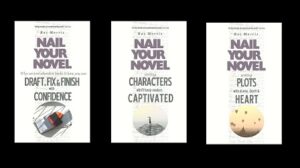
Making the best of things: indie author Roz Morris
A fun post to end the week about a dilemma that indie authors occasionally have to contend with: what to do on receipt of a delivery of print-on-demand books that don't come up to standard. British novelist Roz Morris provides the author's equivalent of that old adage, “When life sends you lemons, make lemonade”.
The other day I had to do a horrible thing. I'd ordered copies of my novels from IngramSpark for a festival where I'd be doing a reading, and two copies had squiffy printing. IngramSpark agreed immediately to send replacements, which was great, but I had to rip the covers off and email a photo to prove it.
Ouch. Yes.
I had a rude introduction to it many years ago when I ran the editorial department of a small publishing imprint. In the basement one day, I discovered crates of books returned from the distributor.
‘Where are they going?‘ I asked.
‘To be pulped,' said the distribution manager. ‘They're damaged.'
I thought of the many careful things we'd done to make them. All the editing, checking, artwork and proofs. ‘Is that really necessary?' I said.
‘There's nothing else we can do with them,' she said.
The Unkindest Edit of All

One of the less enjoyable tasks of the author-publisher: dealing with damaged books
And my bookseller friend, Peter Snell of Barton’s Bookshop in Leatherhead, Surrey, says he’s had to euthanise many a book that was too damaged to sell:
‘What we do depends on the supplier, publisher and price. If the book costs £20 or over, we might return the whole thing. Sometimes we might send back just the cover or title page or obliterate the bar code. I might be able to give it to a school library if it fits their needs.'
Industry Standard
Traditionally published authors don't generally get to see these realities of book husbandry, but indies do because we hold our own stock.
CreateSpace are gentlest on authors' sensibilities. I've had plenty of CS books with misaligned spines – it seems to happen on the thinner books, like my Nail Your Novel series. CS just requires a picture as proof of the problem and replacements are sent immediately.
But IngramSpark's policy, of asking you to destroy the book, is more typical of the industry. And if you’ve ordered big quantities you really have to harden your heart.
Karen Inglis had to rip the covers off a whole box of Eeek (The Runaway Alien) from Lighting Source last year when they arrived with scratched, dirty covers. ‘I was horrified as had thought I would donate them to a reading charity or third world school abroad.'
Clays, too, will pulp a batch if a fault is found – as Jane Davis discovered when she reported that some of her covers were smudged with machine oil.
So I did the deed, and was grateful I only had two copies to vandalise. But the waste bothers me, so I now have two naked book insides on the floor in my hall and haven't quite figured out where they should go. I confided the problem to the folks on Facebook.
Alternative Solutions for Indie Authors
Debbie Young, blogmistress here, said:
“Make them into book bunting or book art.”
She added a picture of paperback carved into elaborate hunks, for which you'd probably need a chainsaw. I think I’ll give that a miss as I don’t know how to tie a tourniquet. (Ed: Actually, the pages are folded, not carved – less dangerous, but requiring more patience!)

Is it a book or is it art? Either way, we love it!
Probably the most practical suggestion came from Jane Dixon-Smith, who had the genius idea to use the pages for guerrilla marketing:
“Do they have running headers with the title on? If so, you could use the pages like flyers to advertise … leave them around, pinned to notice boards etc. If there are no running heads, invest in a rubber stamp.”
But my favourite was this from Kathryn Joyce, who had just been reading the Saturday Guardian https://www.theguardian.com/lifeandstyle/2017/apr/29/how-to-update-your-home-in-a-weekend:
‘Decorating a cloakroom wall with pages from a novel is right on trend.'
Great minds were obviously thinking alike, because Joni Rodgers wrote:
‘My daughter Jerusha wallpapered our downstairs bathroom with pages from my first novel. When we sold the house, I couldn't bear to rip it all down, so I left it for the buyers, autographed with an admonition about following one's dreams.'
Reader, it is gorgeous. http://www.boxocto.com/…/fitting-tribute-to-my-first…
Whatever Next?
So, I still have my coverless copies. I tried to persuade my husband to take one on the train and leave it as a surprise for a traveller, like a very understated Book Crossing. Perhaps I'd scrawl the title on the spine, for an extra handmade touch. His reply: ‘Someone will just think it's rubbish and throw it away.' Oh.
OVER TO YOU What do you do with yours? And, put the other way round, if you found a coverless book or an intriguing page at a bus stop or your Post Office noticeboard, would you pick it up?
Indie #authors - here's a fun way to use any unsaleable books - by @Roz_Morris Share on XOTHER POSTS ABOUT FUN THINGS TO DO TO GET YOUR BOOKS OUT INTO THE WORLD





I’m not an author, but I am a teacher. I suggest talking to your local schools. There are often art teachers who are looking for materials like these to use in art projects and English teachers who want do everything from decorate bulletin boards to do poetry projects like Black Out Poetry and need old books to do them. And school budgets are never what one would hope.
What a great idea, thank you, Rebecca!
Pop a sticker on top that explains it and give it to a local youth hostel. They won’t care about the cover not being there.
It really is such a shame. But it happens. I love the idea of turning it into art. It’s actually the subject matter of this book: http://www.bookmasters.com/Shop/Title/9781938462191
I worry about the natural environment and hate waste, that’s such a shame! Ingram Spark shouldn’t require that. They can do things differently (and better) than trade publishing.